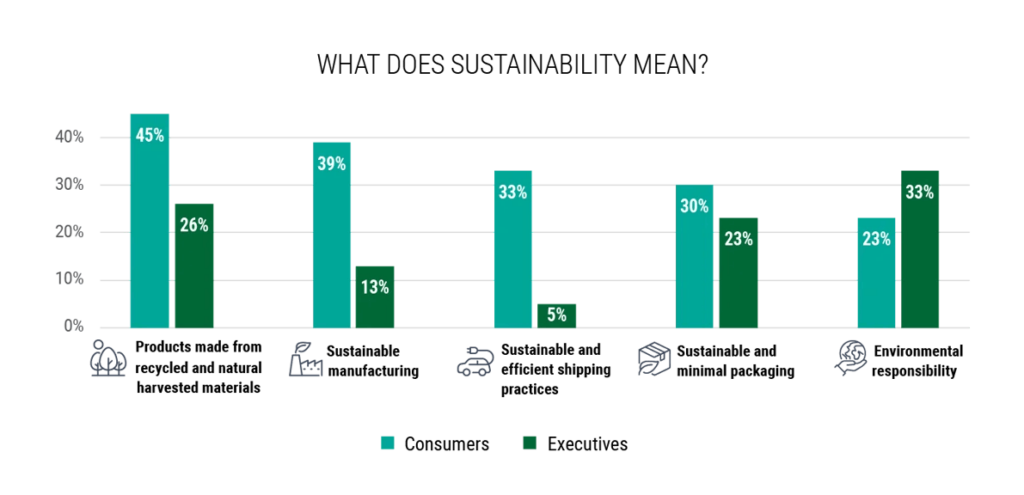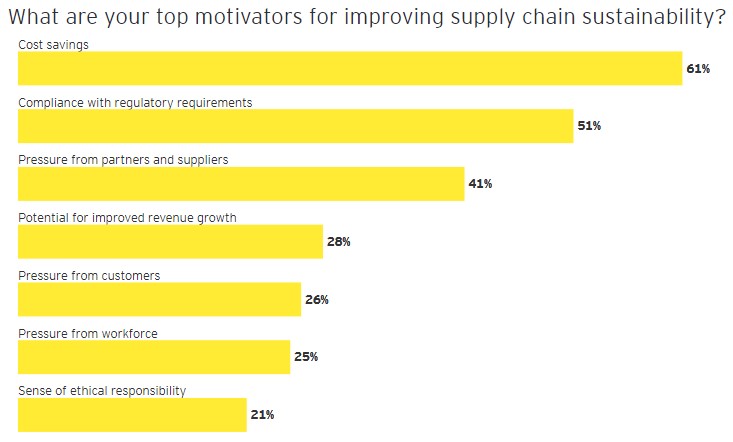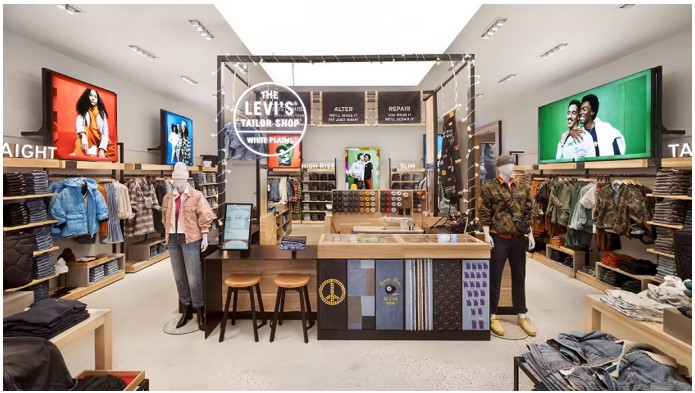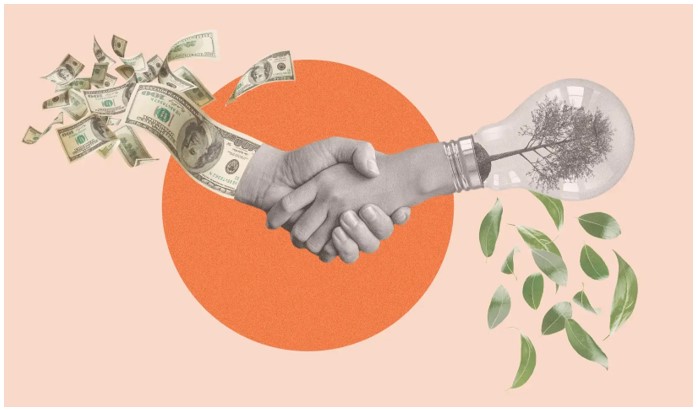Environmental and social responsibility is no longer a niche interest but a key factor in modern retail, shaping today’s retail sustainability trends. Driven by consumer awareness and the urgent need to address environmental challenges, retailers are taking actionable steps to become more sustainable.
Some of the top sustainability trends in retail include:
- Shifting consumer demand
- Net-zero initiatives
- Company transparency
- Recommerce & thrifting
- Alternative packaging
- Repair & buyback services
- Renewable energy
- Waste reduction
From innovative materials to emerging technology and regulations, we’ll explore the 21 most impactful retail sustainability trends.
1. Shifting Consumer Demand
Consumer demand for sustainable practices is reshaping the retail industry. Some 93% of consumers across the board say they maintained or increased their sustainable purchasing habits in 2022. Plus, an average of 70% of shoppers across generations are now saying that sustainability is more important to them than brand names.
On top of that, 84% of customers say that poor environmental practices will alienate them from a brand or company, highlighting the importance of corporate social responsibility. As a testament to those claims, global Google searches for topics related to sustainable products increased by about 130% between 2017 and 2022.
The latest data reveals that 17.3% of the market share in 2022 was captured by sustainability-marketed products, confirming a consumer shift toward these options. This is particularly impressive considering the economic climate marked by inflation.
When it comes to the perception of what sustainability means, a recent survey shows that opinions vary— especially between consumers and retail executives. This represents a crucial gap that needs bridging to align what consumers want in eco-friendly products with what businesses are offering.

(Source: FirstInsight)
2. Generational Shopping Habits
Sustainability is becoming an increasingly critical factor in consumer decision-making, but its influence varies across generational lines.
One recent study showed that 62% of Gen Z shoppers prefer to buy from sustainable brands, and 73% of them are willing to pay more for sustainable products—which is roughly on par with millenials. While this number is lower in older generations, the willingness to spend more on eco-friendly goods has risen by 17% across all generations in recent years.
While eco-friendly products are in high demand, younger consumers are cautious, with 88% of Gen Zers reporting that they don’t always trust brands’ environmental claims.
The secondhand market has skyrocketed in popularity lately as well, even with the least eco-conscious generations. Baby Boomers have shown a significant shift in behavior, becoming 56% more likely to engage with thrift and recommerce stores compared to just two years ago. Gen X and the Silent Generation are not far behind, with a 54% and 44% increase, respectively.
3. Sustainable Production
At the heart of the sustainable production movement are sustainable materials like organic cotton, bamboo, and other eco-friendly alternatives. The use of these materials not only minimizes carbon emissions during production, but also reduces waste in the long run.
However, sustainable production isn’t just about materials; it also involves using processes that are non-polluting, safe, and conserving of natural resources. For example, it’s commonly cited that production accounts for 85%–95% of a smartphone’s carbon footprint, showing the critical need for sustainable practices at this stage.
Consumer studies back up the case for sustainable production, with 24% of US shoppers deeming it “extremely important” for retailers to offer products free from harmful or synthetic materials.
4. Sustainable Supply Chains
Sustainable sourcing is an increasingly key strategy for eco-conscious retail businesses, as 90% of an organization’s greenhouse gas emissions can often be attributed to supply chains. Because of this, many of today’s retailers are proactively examining their entire supply chain to ensure both environmental and social sustainability. A main motive behind this is also cost savings for retailers.
One approach involves minimizing the miles traveled by products to reduce carbon emissions, typically by sourcing locally or optimizing logistics. Partnering with socially and ethically responsible suppliers is another way to source sustainably. Retailers are increasingly setting standards and pushing suppliers to improve their sustainability practices—which involves thorough vetting to guarantee sustainably sourced raw materials and eco-friendly manufacturing processes.
This focus on sustainability not only lessens environmental impact but also boosts brand perception, catering to an increasingly eco-aware consumer base.

(Source: EY)
5. Company Transparency
Now more than ever, brands are making strides to disclose their green initiatives and performance metrics. Annual sustainability reports have become a common industry tool that provides a deep dive into a company’s environmental initiatives. This information is often updated in real time online, turning customers into active stakeholders.
Transparency also extends to product labels, featuring sustainability details that attract like-minded shoppers and enable informed purchasing decisions. This openness builds trust and invites customers to be part of the company’s eco-conscious mission, accomplishing both environmental goals and customer loyalty.

Gucci sets a high standard in transparency, offering a dedicated online platform that annually reports its environmental impact and sustainability goals. (Source: Gucci)
6. Increased Regulations
With climate change and sustainability becoming increasingly critical, retailers can expect changes and increases in environmental regulations influencing upcoming retail sustainability trends. As these regulations evolve, retailers will need to ensure compliance with new and existing rules aimed at reducing emissions and waste. Here are some key trends to keep an eye on:
- Ban on Destruction of Textile: The European Union (EU) has banned the destruction of unsold textiles to reduce waste through recycling and reuse. This trend is likely to influence the US textile industry in the future.
- Environmental Justice: The Biden Administration’s focus on environmental justice may impact retail operations, particularly distribution centers. Compliance with emissions and pollution regulations will be crucial.
- Right To Repair: Manufacturers’ restrictions on product repairs are being challenged through “Right to Repair” bills globally, aiming to reduce waste by extending the lives of products. Standardization of components is also considered to reduce waste further.
- Chemicals in Products: Managing chemicals in products presents a growing compliance challenge, with varying state-level requirements and a growing focus on imported goods.
- Hazardous Waste: Tighter hazardous waste regulations are gradually being adopted by states, with a focus on lithium batteries and aerosol cans.
- Solid Waste: Retailers face pressure to manage solid waste due to plastic pollution, low recycling rates, and increased ecommerce waste. Extended Producer Responsibility (EPR) laws and recycled content requirements are emerging trends, driving compliance efforts and consumer education.
7. Alternative Packaging
Seventy-seven percent of Americans support policies to reduce single-use plastics, which has urged retailers to change their packaging materials. These days, a variety of eco-friendly alternatives are used by companies ranging from grassroots manufacturers to mainstream brands like Kellog’s and Gucci. Sustainable packaging is an industry transformation that retailers are adopting to align with consumer values and minimize environmental impact.
Each of these packaging alternatives communicates a retailer’s commitment to sustainable practices and appeals to different segments of an increasingly eco-conscious consumer base:
- Recycled Packaging: Made from post-consumer waste, this type of packaging is both eco-friendly and supports a circular economy.
- Recyclable Packaging: Designed to be collected, processed, and transformed into new products, this packaging helps to reduce the waste that goes to landfills.
- Reusable Packaging: Created for long-term use, reusable packaging encourages consumers to return or repurpose a product’s packaging—like a glass jar or bottle, refillable dispenser, or canvas bag. This can have the added benefit of creating a long-term relationship between the brand and the consumer and displaying the brand logo.
- Biodegradable or Compostable Packaging: These materials break down naturally over time, reducing the long-term impact on landfills and contributing positively to soil fertility.
- Zero Packaging: This packaging solution is typically used by “refill shops.” It’s the ultimate in waste reduction by forgoing packaging altogether, leaving consumers to provide their own containers. This appeals to deeply sustainably-minded consumers and requires a dedicated business model.
- Reduced-plastic Packaging: This concept focuses on minimizing the use of plastic components or using bioplastics that break down more quickly. The reduction of plastic is particularly important for marine ecosystems and resonates well with concerned consumers.
Did You Know?
Only about 5% of recyclable plastic is actually recycled in the United States, and only a staggering 5% of those materials are ever turned into new products.
Using recyclable materials is a step in the right direction, but not nearly as effective as many other sustainable packaging alternatives.
8. Renewable Energy & Energy Efficiency
Investing in renewable energy sources like solar and wind not only reduces operational costs but also curtails carbon emissions. As of 2023, the combined annual green power use of the EPA’s (Environmental Protection Agency) Top 30 Retail Partners amounts to an impressive 12.3 billion kilowatt-hours. This adoption of green power is a clear indicator of the shift toward renewable energy for running retail spaces, warehouses, and distribution centers.
Beyond the adoption of renewable energy, retailers are also focusing on energy-efficient upgrades for their infrastructure. Switching to LED lights cuts energy use and lasts longer, reducing replacement needs, while energy-efficient HVAC and better insulation also help maintain temperature with less energy.
Even many factories are going green by upgrading to newer and more energy-efficient equipment as well as implementing tech to spot energy leaks.
9. Recommerce
Recommerce, also known as reverse commerce, is an online business model focused on selling used or preowned items. Unlike traditional ecommerce (which mainly sells new products), recommerce aims to reduce waste and promote sustainability by giving items a second life.
This makes recommerce a prime example of the circular economy—a system designed for products and materials to be reused, repaired, or recycled, rather than ending up as waste. The secondhand approach also provides a cost-benefit for retailers and consumers alike by extending the revenue lifecycle of products and offering them at a lower price point.
Recommerce is particularly big in certain markets, providing a more budget-conscious option for consumers who may find new products too costly. These are some of the top sectors:
- Clothing & Fashion: Sites like Fashionphile and The Real Real have carved out a niche in luxury resale, but recommerce isn’t limited to high-end items. You’ll also find everything from kids’ clothes to outdoor essentials on other platforms.
- Electronics: Used and refurbished tech is a cornerstone on marketplaces like eBay and Facebook, but has also paved the way for dedicated recommerce sites like NewEgg.
- Music Gear: Instruments and amps can be quite an investment, but they retain their value well. That makes them a hot commodity in the recommerce market, with platforms like Music Go Round and Guitar Center’s ‘used’ section offering a wide selection.
10. Thrifting
Thrifting, while a part of the circular economy like recommerce, serves a different niche in sustainable retail. Thrift stores primarily operate in physical locations and offer a broad range of items, while recommerce takes place online and features items that have been curated or evaluated for condition. A recent report indicates that almost three-fourths of retail executives are either currently offering or are open to selling secondhand goods, marking a notable uptick since 2020.
The growing allure of second-hand shopping is supported by data from younger consumers: 62% of Gen Z and millennials report looking for items secondhand before opting for new purchases. Thrift store shoppers save an average of $150 a month, translating to $1,760 a year—making it both economically and environmentally beneficial. Retailers can tap into this trend by adding second-hand items to their inventory, not only broadening their customer reach but also meeting the rising demand for sustainable shopping options.
11. Buyback Services
Retailers are also adopting buyback or trade-in programs in line with circular economy principles, allowing customers to sell back their used products. The retailer can then either resell these items or recover their components for other uses. This strategy encourages responsible product disposal, minimizes waste, and supplies the retailer with additional inventory.
Buyback services also reduce the need for the production of new items, which helps to conserve resources and energy. For consumers, the buyback option adds value by offering cash, discounts, or store credits for future purchases, further encouraging the cycle of responsible consumption and reuse.
Lululemon has a robust trade-in program that’s highly popular with its customers.

(Source: lululemon)
12. Repair & Maintenance Services
Another way that retailers are tapping into the circular economy is by offering repair and maintenance services for items like clothes, shoes, and electronics. This extends product lifespans and cuts waste, which helps to meet the rising consumer demand for sustainability.
Providing these services also boosts customer loyalty and retention by being a go-to for product care, and can even create a new profit channel. Plus, it positions the retailer as a responsible business, appealing to those who prefer sustainable and durable goods.
Levi’s offers repair services—as well as other customizations—at its Tailor Shops. Other notable retailers that offer repair and maintenance include Patagonia, Apple, and Canon.

(Source: Levi’s)
13. Urban Agriculture
Urban agriculture (or urban farming) has grown more than 30% in the last 30 years and continues climbing, reflecting a growing consumer interest in local, fresh produce and reduced carbon footprints. Many restaurants and grocers have begun either collaborating with local urban farms or setting up their own in-house systems, often using vertical or hydroponic techniques.
By sourcing produce from urban farms, retailers cut down on transportation miles, resulting in a significant reduction in carbon emissions. This also ensures that the produce is as fresh as possible, reducing waste due to spoilage. For consumers, this offers a new level of transparency in sourcing, as well as an added level of assurance that they’re eating clean and sustainable foods.
Additionally, urban farming can serve as an educational tool, informing consumers about sustainable agriculture practices and food scarcity. Some businesses even incorporate interactive experiences, allowing customers to pick their own produce directly.

Urban farms often take advantage of unused urban space. (Source: Green City Growers)
14. Waste Reduction
Waste reduction is an important focus when it comes to retail sustainability trends, and for good reason. In the US alone, the retail industry generates over $2 billion in waste annually. Along with packaging, much of retail’s waste problem comes from unused or unsold product, especially in industries where goods are subject to spoilage, obsolescence, or quickly going out of trend.
The fashion industry is a glaring example, where brands are notorious for burning, shredding, or landfilling unsold merchandise. Companies like H&M and Burberry have garnered significant criticism for incinerating dozens of tons of clothing rather than using more sustainable disposal methods.
In response, sustainably-minded retailers are adopting more responsible waste management approaches. For instance, clothing brand Reformation creatively repurposes unsold inventory into new collections. Other brands like Adidas offload their unsold goods by selling them to discount stores like Ross and T.J. Maxx. Similarly, some grocery stores are partnering with food banks or companies like Imperfect Foods to redistribute unsold but still edible produce.
15. Slow Fashion
The fashion industry is responsible for as much as 10% of all global emissions—more than the aviation and shipping industries combined. And fast fashion has stood out as one of the biggest offenders in this sustainability issue.
Fast fashion refers to rapidly-made, trend-focused apparel from companies like Shein, H&M, and Forever 21. These brands often face criticism for poor labor practices, environmental harm, and promoting a disposable culture to sell low-cost items.
These practices lead to excess natural resource use and increased greenhouse gas emissions. While cheap clothes appeal to many, growing awareness is shifting consumer attitudes.
Slow fashion counters the fast fashion model by emphasizing quality, sustainability, and ethical production. Brands like Patagonia and Eileen Fisher lead the way, focusing on durable materials, fair labor practices, and longer product lifecycles—helping to limit waste and lower overall environmental impact. As consumers become more eco-conscious, the slow fashion movement is gaining traction, offering a more sustainable and ethical retail trend.
16. Net-zero Initiatives
Aiming for net-zero carbon emissions is now a key goal in the retail world, driven by consumer demand for corporate responsibility. A net zero Initiative or net zero target refers to a business’s plan to erase or offset its carbon footprint. This is often accomplished by reducing energy consumption, switching to renewable energy sources, and improving operational efficiency.
But these initiatives go beyond just clean energy. Companies are also investing in reforestation, carbon capture tech, methane capture at landfills, and even buying carbon credits to balance out their emissions. These net-zero efforts are good for the planet and can also give a brand’s reputation a significant boost.
A net-zero plan usually begins with a carbon footprint analysis which helps identify key emission sources and develop a long-term action plan.
Here are some notable companies on a mission toward net zero-carbon emissions:
- Apple achieved carbon neutrality for its global corporate operations in 2020 and aims to be carbon neutral across its entire value chain by 2030.
- Woolworths has committed to net zero emissions from all of its 95 stores in Australia by 2050, with a focus on reducing supply chain waste and improving refrigeration systems.
- Carrefour aims for total carbon neutrality by 2040, using 100% renewable electricity and reducing energy use by over a quarter by 2030.
- Colagte-Palmovile aims to be carbon neutral by 2040, with a strategy involving supply chain engagement, renewable energy use, and production of more sustainable products.
- Pandora plans for net-zero emissions by 2040 and halved greenhouse gas emissions by 2030, plus production using primarily recycled gold and silver.
- Walmart aims to rely solely on renewable energy by 2035 and achieve total carbon neutrality by 2040, with specialized initiatives geared toward reducing and avoiding 1 billion tons of supply chain emissions by 2030.
17. Donations
Another retail sustainability trend is businesses linking their corporate responsibility to green causes and charities by making financial donations in the name of sustainability. This isn’t just good PR; it’s a strategic move that resonates with customers and shareholders alike.
Companies are now seen contributing to a range of eco-friendly initiatives, from saving endangered species to advancing renewable energy. This helps strengthen each brand’s reputation and also creates a deeper connection with consumers, as 77% of consumers prefer to buy from brands that share their values.
Many retailers also offer the option for customers to donate at checkout or on their POS system, letting you round up your bill to contribute to a good cause. Some even donate a portion of sales from specific products to chosen eco-projects. This allows businesses to support vital causes while building trust and loyalty among their customers.
The option to donate to a sustainable cause at checkout can help raise awareness, funds, and consumer loyalty.

(Source: The Wall Street Journal)
18. Employee Awareness Training
As sustainability becomes a critical part of business strategy, retailers are investing in employee awareness training to foster a culture of awareness and action. These educational programs are designed to equip staff with essential knowledge of climate change, its impact, and what can be done to mitigate these effects.
In high-level examples of employee awareness training, everyone in the organization is taught how their roles intersect with sustainability goals, from customer service reps to supply chain managers. They learn about responsible waste management, energy-efficient practices, and even how to communicate the company’s sustainability efforts to customers.
The driving motive behind this type of training is that as employees become more informed, they’re likely to contribute innovative sustainability ideas— boosting both the company’s eco-credentials and bottom line.
19. Tying Compensation to Sustainability Performance
Linking senior leaders’ pay to their company’s ESG (environmental, social, and corporate governance) performance is becoming a significant retail sustainability trend. Boards understand that impactful change starts at the top, so they’re aligning financial incentives with environmental objectives.
Key metrics like carbon reduction, waste efficiency, and sustainable sourcing usually serve as the benchmarks for these incentives. Executives who meet or exceed these objectives may earn additional bonuses or stock options, while those falling short may experience financial penalties.
This approach not only motivates leaders to act sustainably but also appeals to investors and stakeholders who are keen on long-term eco-friendly strategies.
Many companies, including Chipotle, Mastercard, and Papa John’s, are now linking senior leaders’ pay to ESG goals.

(Source: Sarah McKinney, Stanford Graduate School of Business)
20. AI Enhancements
In the modern retail landscape, artificial intelligence (AI) is a powerful tool in advancing sustainability goals. AI plays a vital role in precision agriculture, improved weather forecasting, and optimized resource allocation—all contributing to the reduction of greenhouse gas emissions.
According to PwC, AI has the potential to lower global emissions by 4% by 2030. Data-driven platforms like Google’s Earth Engine are key for providing helpful insights, enabling retailers to align operational efficiency with environmental responsibility.
Related: AI’s other applications in retail
21. Cloud Computing Efficiency
While not as spotlighted as AI, cloud technology—the delivery of computing services like servers, storage, databases, and networking over the internet—can help achieve sustainable operational efficiency by aiding in energy and resource optimization.
Traditional data centers that businesses often use for storage and computing power are usually less energy efficient due to older technology or lack of smart management systems. This makes it hard for them to save energy during low-demand times. Plus, their need to have extra backup systems for reliability can increase their energy usage.
In contrast, cloud service providers pool resources and distribute them based on real-time demand with sophisticated systems in place for managing energy consumption. This centralized, shared system allows for more efficient use of resources. For example, if a retailer’s online traffic dips during off-hours, the cloud provider can better reallocate resources, which helps cut down on overall energy use.
Plus, cloud providers are increasingly investing in renewable energy sources to power their massive data centers. Amazon Web Services (AWS), for example, aims to achieve 100% renewable energy usage by 2025, setting a new industry standard. This transition to cloud technology not only reduces costs for retailers but also contributes indirectly to the demand for clean, renewable energy.

Traditional data centers like this one are massive and complex operations, requiring large amounts of electricity to run at full capacity 24/7. (Source: Mission Critical Magazine)
Bottom Line
Environmental and social responsibility have changed from obscure concerns to pivotal elements in today’s retail landscape. More and more, consumer demand for sustainable practices is driving the key retail sustainability trends.
Retailers now have an array of strategies they can use to not just meet consumer expectations but also benefit the planet. Trends in retail sustainability like circular economy practices, alternative packaging, and renewable energy adoption are turning retail businesses into agents of change that also appeal to consumers’ growing sustainability requirements.